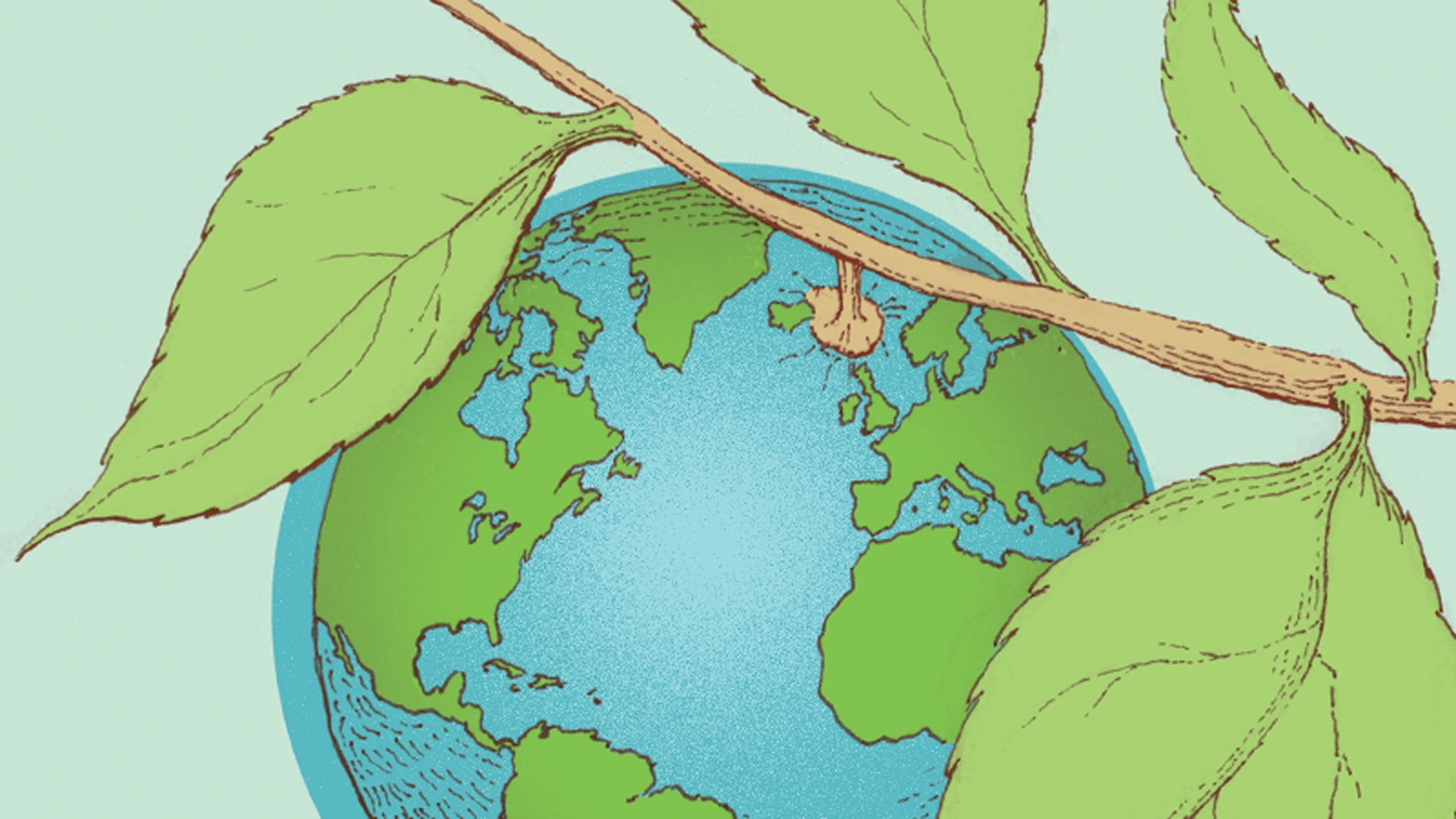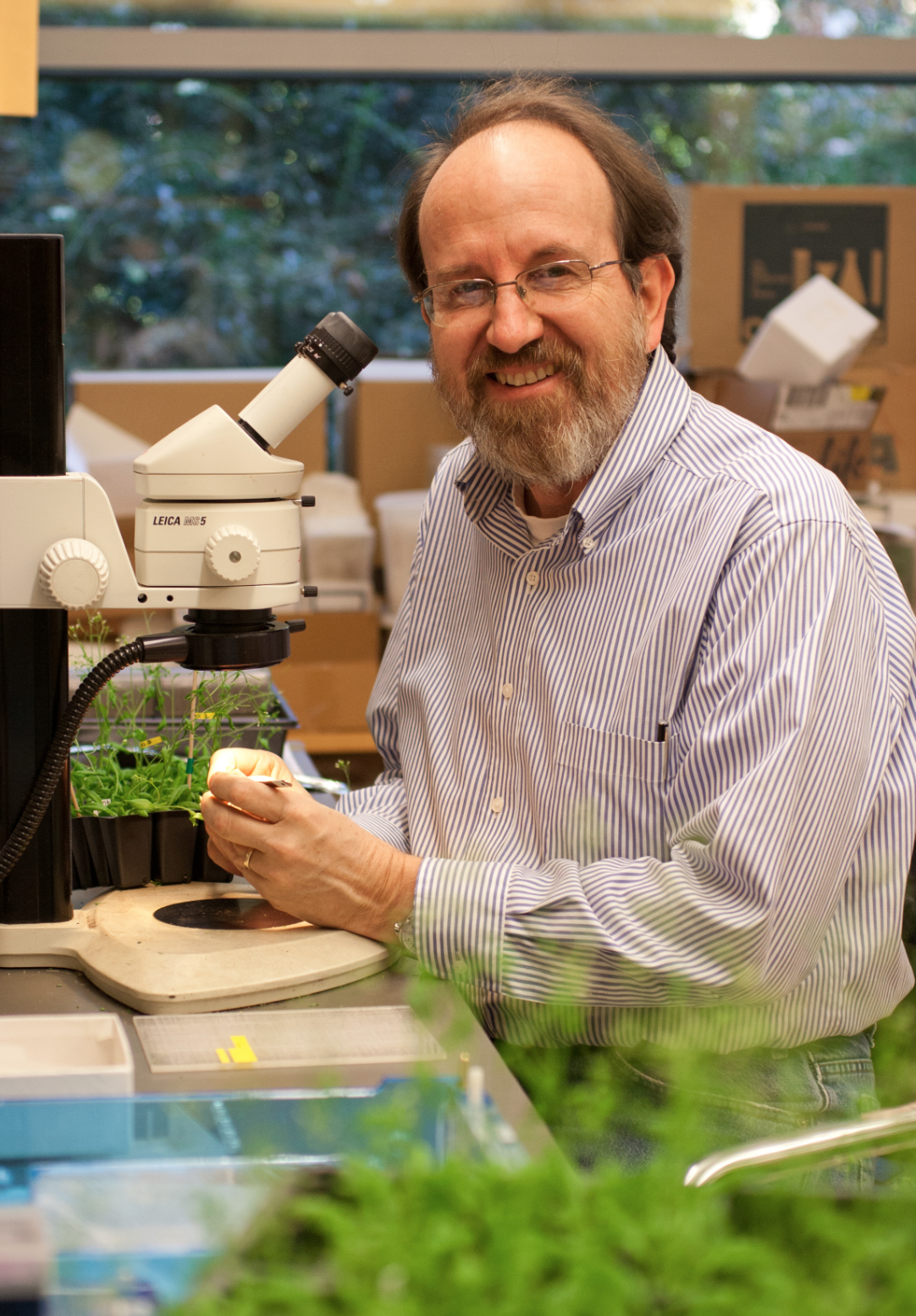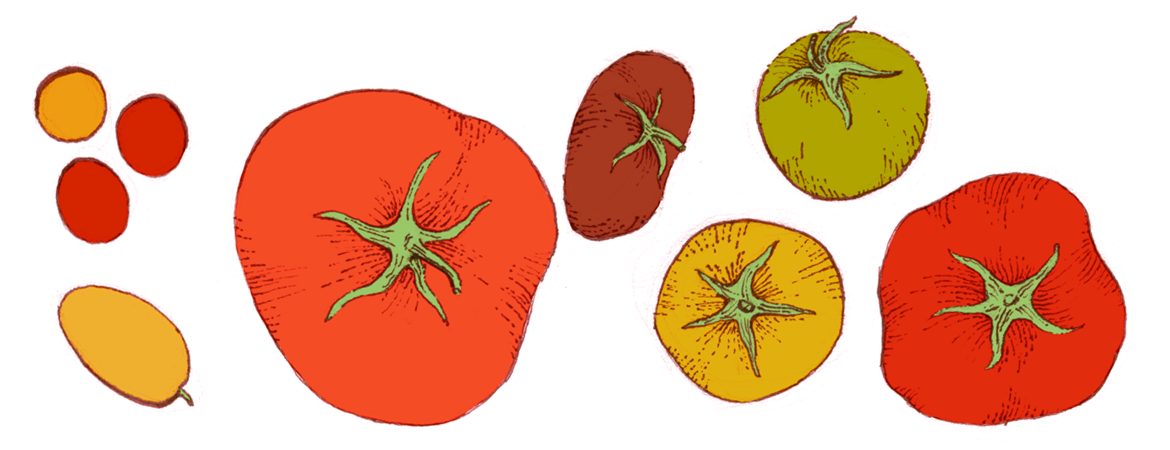Scott Poethig is a big fan of subtlety. He has to be, because he studies something that’s around us all the time and profoundly affects our lives, yet few people hardly ever notice: leaves.
Colorful flowers naturally attract our attention and admiration, notes Poethig, Patricia M. Williams Professor of Biology. “Humans focus on color. Because leaves are almost always green, they look the same to us. Most people think ‘a leaf is a leaf,’ but every leaf has its own identity. They may look the same, but they’re distinctive in many different ways.”
Those differences, and how they manifest as morphological and genetic changes as plants develop and grow, are the focus of Poethig’s research, a phenomenon called vegetative phase change. “I like to call it the most important unsolved problem that nobody knows about,” Poethig says with a laugh.
Soft-spoken with a gentle demeanor, Poethig is nonetheless passionate about his work, studying the switch from juvenile to adult development in plants. He first encountered the topic during his post-doctoral years, first at Stanford and later in a USDA lab with Dr. Edward H. Coe at the University of Missouri. The phase change from juvenile to adult had been identified in corn decades earlier, but never studied in detail. Poethig was working with a class of mutations in maize called Teopod 1, 2, and 3, and it became clear that the Teopods were involved in developmental timing. “What was happening in the mutant corn was that juvenile vegetative traits were being prolonged in their expression,” Poethig says, “and I wanted to know why.”
"I like to call it the most important unsolved problem that nobody knows about."
Usually when biologists use the terms juvenile and adult, they are referring to nonreproductive (or more precisely, pre-reproductive) and reproductive stages: Adults produce eggs or sperm and juveniles don’t. But for plant biologists such as Poethig, the terms retain their original meaning, referring not only to the presence or absence of structures involved in sexual reproduction, but also to differences in the character of vegetative organs, like leaves and buds. Poethig cites a particularly apt illustration for the Penn community. “Anybody at Penn is familiar with the juvenile stage of ivy, because that’s the kind of ivy that’s on all the plaques all over campus. That’s juvenile ivy. Adult ivy has a completely different type of leaf. I like to joke that the Class of 1927 must have had a botanist in it, because that’s the only plaque on campus that shows adult ivy.”
One hardly need be a botanist to spot the difference between flowering and non-flowering plants, but that’s only one type of phase transformation. “Plant biologists are fond of flowering, because it’s a dramatic transformation,” Poethig points out. “You go from making a leaf to making flowers. Nobody can miss it. They are also interested in flowering because it makes seeds, and we eat seeds. But the vegetative transformation is just as dramatic as the transition to flowering in some species. The question of what drives that is what has fascinated me ever since I was a postdoc.”
Poethig continued his work on corn after coming to Penn in 1983. After briefly growing specimens at Morris Arboretum, he rented a field from a New Jersey farmer. Although Poethig had learned how to pollinate corn and do corn genetics at the University of Missouri, that didn’t prepare him to be a farmer: “I had to lay out my own irrigation pipes and pumps, do all my own hoeing, and so on. I had to teach myself these things when I got to Penn. As the farmer who worked my field will be happy to tell you, I was a lousy tractor driver.”
When not tending his corn in New Jersey, Poethig was back in his lab at Penn, studying corn mutations and probing their molecular basis. Along with studying mutations that prolonged juvenile development, he found mutations that made the juvenile to adult transition occur earlier than normal, so-called precocious mutant plants. Then a breakthrough came along from an unexpected direction.
Biologist Victor Ambros, at Dartmouth College at the time, had been working along the same lines as Poethig but in the animal kingdom, studying the phase transformation from juvenile to adult in roundworms rather than plants. In 1993, he found that one of the genes involved, lin-4, was associated with a small RNA molecule, only 22 nucleotides long, that had never before been identified. At the time, Ambros thought it merely an oddity, something unique to the C. elegans roundworms he was studying.
But he had discovered something far more significant. Poethig explains, “In 2001, three groups, his [Ambros] included, cloned microRNAs out of humans and flies and nematodes and it turned out there’s lots of them. In humans, at least 30 percent of all genes, involved in all sorts of processes, are thought to be regulated by these microRNAs (miRNA). People used to call them the dark matter of the genome because they are so numerous and nobody knew about them.”
"For cultivated plants to be healthy, you have to have forests, you have to have a healty environment, you have to have watersheds."
Ambros’s discovery turned out to be a major piece of Poethig’s puzzle, but not the complete answer. “It turns out that this switch from juvenile to adult development in plants is directed by microRNAs in the same way as the transition in worms.” By this time, Poethig had shifted his studies from corn to Arabidopsis thaliana, a small flowering plant that is often called “the fruit fly of the plant world.” Its rapid life cycle, small size, and general adaptability make it a much more flexible experimental subject than corn.
In 2006, Poethig identified the particular miRNA, called miR156, that serves as the master regulator of the Arabidopsis juvenile to adult phase transition. “After decades of working in the dark and not knowing, I had no confidence that I would ever understand the molecular basis for this phenomenon,” he says. “Amazingly, the Teopod mutations in corn that first attracted me to the problem of vegetative phase change also turn out to encode miR156.”
Raised in the Philippines as the son of a Presbyterian missionary, Poethig developed a keen awareness of the importance of plants. “I grew up in Manila. I wasn’t a farm kid, but in the Philippines you certainly became aware of your dependence on agriculture,” he says. “The Philippines at that time was not self-sufficient in food. When a new variety of dwarf rice was introduced, it was really transformative. In fact, the variety came to be known as ‘miracle rice.’ More than anything else I’ve done at Penn, I’ve probably gotten more publicity for teaching a course on the biology of food, which I introduced about five years ago. That course grew out of my childhood experience.”
Poethig briefly considered following in his father’s missionary footsteps, but was interested in science and anthropology from a very early age. He enrolled in the College of Wooster at Ohio “because that was the school where the kids of Presbyterian ministers went,” and since the school didn’t offer an anthropology major, he chose biology. Fascinated by microscopes, he did his senior honors thesis at the Ohio Agricultural Research and Development Center in Wooster, where he studied infected corn leaves, looking for viruses and bacteria. That experience, plus some courses in genetics and developmental biology, set him on the path to a doctorate from Yale and his life’s work.
His childhood awareness and appreciation of agriculture led to a major new research interest. Poethig recalls, “I was browsing the Internet in 2009 and came across a conference in Nairobi, Kenya—the Second World Congress in Agroforestry. I had no idea what agroforestry was, but I decided to go, and it was fascinating.”
Poethig realized that phase change in trees might be relevant to agroforestry, because ultimately agriculture can’t be separated from the rest of the plant world. “For cultivated plants to be healthy, you have to have forests, you have to have a healthy environment, you have to have watersheds,” he says. “For our agricultural terrain to be healthy, you also have to have forested terrain.”
He came home to Philadelphia with new questions to explore. Working on a National Science Foundation grant, Poethig is now studying the evolution of vegetative phase change in Acacia, a plant group of both professional and personal interest. Phase change in plants was first described in Acacia in 1875, and the phenomenon is especially well-demonstrated in its Australian varieties. The tree is widely used in sustainable agroforestry systems because of its nitrogen-fixing characteristics and ability to restore degraded soil. Also, says Poethig, “We had an Acacia growing outside the house I grew up in. Acacias are everywhere in the Philippines.”
Poethig obtained seeds of about a hundred Acacia species, concentrating on Australian types, and planted some of them in the department’s greenhouse, where they’re already threatening to take out the roof. “They’re only a year old, but already some are about five meters tall,” he notes.
Pinning down the microRNAs as the major player of vegetative phase transition has hardly answered all of Poethig’s pressing questions. “I really want to understand how phase change is regulated, what’s the ultimate timing mechanism,” he says. “We don’t know why miR156 changes its expression pattern, and since this change is responsible for vegetative phase change, we need to understand this switch.” And the big question still remains: “Why do plants have juvenile stages? All plants have a juvenile stage to one extent or another, but it’s a huge open question as to the specific functional consequences. What makes a juvenile plant different from an adult plant?” For Scott Poethig, the answers can be seen and appreciated in the green leaves of Acacia, Arabidopsis, and the other plants that are such an important part of our world but that most of us, as Holmes once remarked to Watson, “see but do not observe.”
A UNITED NATIONS OF TOMATOES
Scott Poethig isn’t driving tractors or farming anymore, but he’s still growing things outside of the lab. His main hobby is tending a 10 x 15-foot plot in the Schuylkill River Park Community Garden, where he specializes in tomatoes—all very carefully chosen. This year, he based his selections mostly on a recent paper in the journal Current Biology on the metabolomics of tomato taste, in which various varieties were ranked and rated based on taste panels and chemical analysis. Since the analysis considered varieties from all over the world, Poethig ended up with a highly eclectic international crop.
“Ailsa Craig is a Scottish tomato that ranked highly, so I got that one,” he says. “Matina is a German tomato that also ranked highly. One guy in the garden wanted me to maintain seeds of a Thai tomato, so I grew that one. My wife’s from Croatia, so I decided to grow some Yugoslavian tomatoes; I have a Yugoslavian variety, Crnkovic, that we got from an Amish family that we know. Then I got one from Croatia, several from Macedonia, then I have a Japanese one called Momotaro. And a couple of American ones, Brandy Boy from Burpee, Lemon Boy, Amana Orange. Penn State recommended its top two varieties. I have about 13 varieties.” Ever the scientist, Poethig identifies each plant “with a little laminated label with the name of the variety and a little bit about it, its history and genetics.”
“I get a lot of produce out of my little plot,” he says proudly.
“Probably harvested at least 80 pounds of tomatoes this summer.” He has even bigger plans for the future. “My wife Maja Bucan, Professor of Genetics at Penn, and I bought a second home last summer in Lancaster, near Mount Joy, which comes with 10 acres of woods. So now I can start thinking more about trees.”







